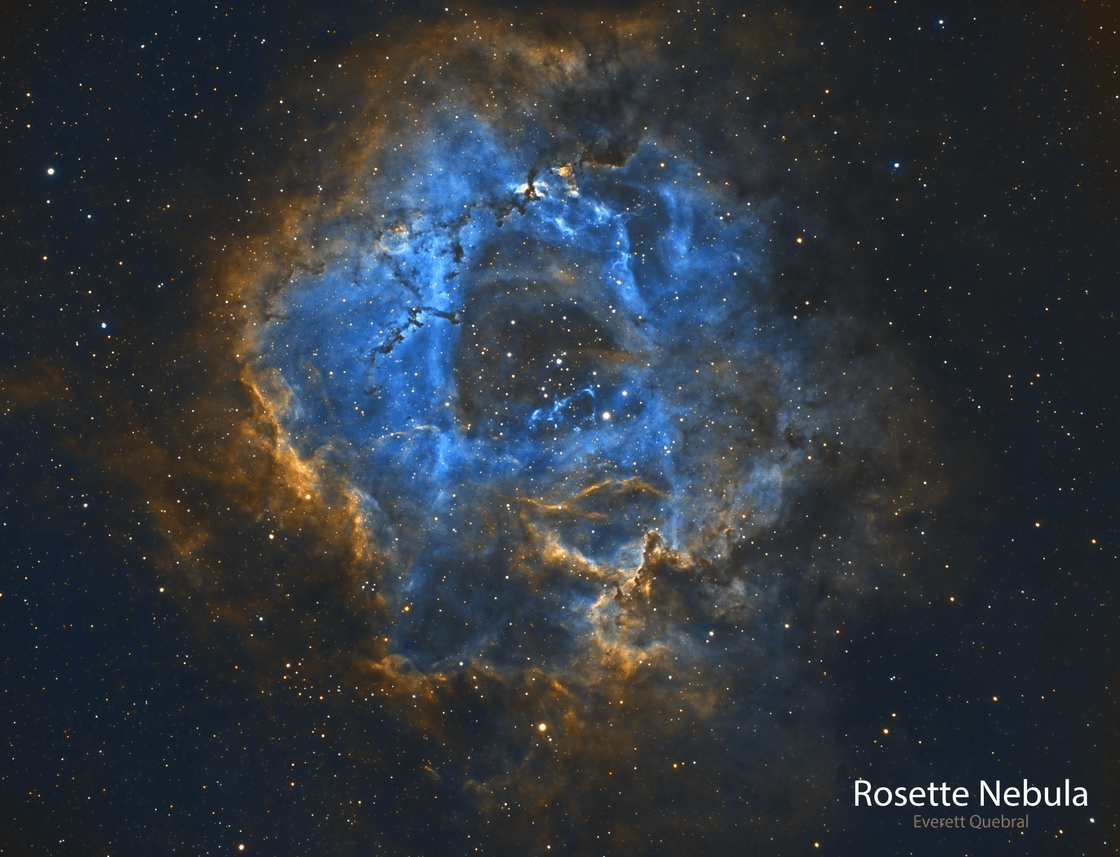Rosette Nebula

- Published on

Summary of the Rosette Nebula (NGC 2237): The Rosette Nebula, designated as NGC 2237, is a stunning emission nebula located in the constellation Monoceros. Its intricate rose-like shape, formed by glowing hydrogen gas and young, massive stars, makes it a captivating object in the night sky. The nebula's central cluster of stars, NGC 2244, contributes to the ionization and illumination of the surrounding gas clouds, creating a visually striking cosmic spectacle. The Rosette Nebula serves as a prominent target for astronomical study and astrophotography, offering insights into star formation processes and stellar clusters.
Discovery and Early Observations: The Rosette Nebula was first identified and cataloged by astronomers during the 18th and 19th centuries. Early observers noted its distinctive shape and the presence of a central star cluster, sparking interest in studying its nebular structures and stellar populations.
Astronomical Contributions: Throughout history, astronomers and researchers have contributed to our understanding of the Rosette Nebula and its significance in galactic evolution. Their observations, spectroscopic analyses, and theoretical models have provided insights into star formation mechanisms, the dynamics of ionized gas clouds, and the interaction between young stars and their nebular environments.
Photographic Era: Advancements in astronomical photography during the 20th century allowed for detailed imaging of the Rosette Nebula. Photographic plates and later digital imaging technologies captured the nebula's intricate details, revealing the distribution of ionized hydrogen, dark dust lanes, and young stellar clusters within NGC 2237.
Telescopic Observations: Telescopic observations of the Rosette Nebula across different wavelengths, including hydrogen-alpha and oxygen-III filters, provided additional insights into its ionization state, chemical composition, and the presence of young stellar objects. These observations have helped astronomers unravel the complex processes of star formation and the interplay between massive stars and their surrounding nebular environments.
Observation Using Own Telescope: Many amateur astronomers have observed and captured the Rosette Nebula using their own telescopes and astrophotography equipment. Utilizing telescopes with moderate to high aperture and specialized filters for narrowband imaging, amateur astronomers can capture stunning views of the nebula's rose-like shape, intricate details, and surrounding star cluster.
Equipment Used by Others: Amateur astronomers often use telescopes ranging from 80mm to 200mm aperture, such as refractors or reflectors, for observing and photographing the Rosette Nebula. Paired with dedicated astrophotography cameras, such as the ZWO ASI series or DSLR cameras with modified filters, these setups allow for capturing the nebula's emissions and creating detailed images with long exposure times.
Exposure Settings and Processing: Capturing the Rosette Nebula requires careful planning of exposure settings, including exposure time, ISO sensitivity, and temperature control, to achieve optimal data acquisition. Advanced processing techniques using software like PixInsight or Adobe Photoshop are then used to calibrate, align, and enhance multiple exposures, revealing the intricate details, vibrant colors, and dynamic structures of NGC 2237 in exquisite detail.
Interpretation and Artistry: Beyond its scientific value, astrophotography of the Rosette Nebula allows for artistic interpretation, showcasing the beauty and complexity of stellar nurseries in the cosmos. Skilled processing techniques and artistic vision transform raw data into a visually stunning image that conveys both scientific detail and aesthetic appeal, inviting viewers to explore the wonders of star formation and the ongoing processes of cosmic evolution.